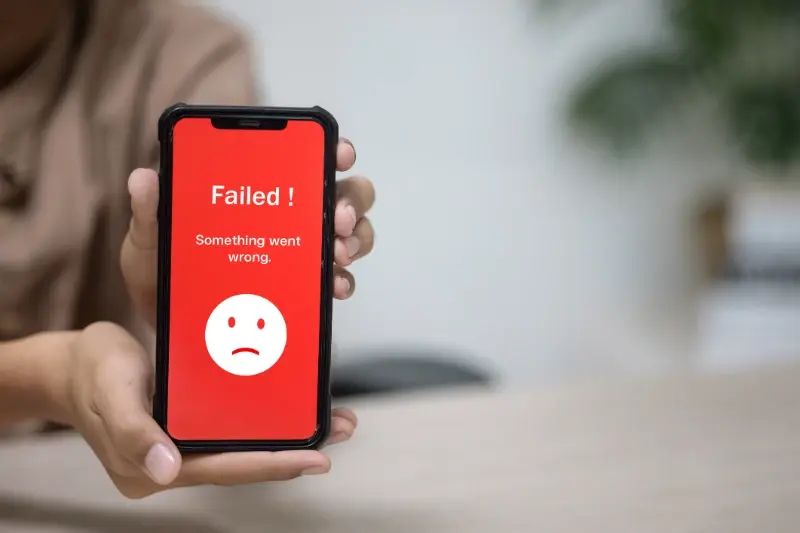How To Research Existing Apps Without Getting Paranoid
Every mobile app developer faces the same uncomfortable truth: your brilliant idea probably already exists in some form. The app stores are flooded with millions of apps, and the chances of finding a completely untapped market are about as likely as finding a unicorn in your back garden. But here's the thing—this isn't actually a problem. It's an opportunity.
The real challenge isn't avoiding competition; it's learning from it without losing your mind in the process. I've watched countless developers fall into what I call the "research rabbit hole"—spending weeks obsessing over every competitor, analysing every feature, and ultimately paralysing themselves with information overload. They start with healthy curiosity and end up with unhealthy paranoia.
Good competitive analysis gives you confidence in your direction, not anxiety about your competition
Smart market research for mobile apps isn't about copying what others do or proving that your idea is completely original. It's about understanding the landscape so you can find your own unique path through it. When done properly, competitive analysis becomes your secret weapon—not your source of sleepless nights. The key is knowing what to look for, how to look for it, and most importantly, when to stop looking.
Understanding the difference between healthy research and unhealthy obsession
After building mobile apps for over eight years, I've watched countless developers and entrepreneurs start their research with good intentions—only to spiral into what I call "app analysis paralysis." You know the type: they spend months studying every competitor, downloading hundreds of apps, and creating spreadsheets that would make an accountant weep with joy. But here's the thing—this isn't research anymore, it's procrastination dressed up as productivity.
Healthy research has clear boundaries and specific goals. You're looking for gaps in the market, understanding user expectations, and identifying what works well in your space. Unhealthy obsession, on the other hand, becomes an endless rabbit hole where you convince yourself you need to study just one more app before you can start building.
Signs you've crossed the line
- You've been researching for more than two weeks without starting any actual work
- You feel paralysed by how much competition exists
- You're constantly finding new apps to analyse
- Your research notes are longer than most novels
- You've started questioning whether your idea is worth pursuing
The secret is setting time limits. Give yourself a week maximum for initial research, then move on to planning and building. Remember, you're not trying to create the perfect app—you're trying to create a useful one that solves real problems.
Setting clear research goals before you start
Before you open that first competitor app, you need to know what you're looking for. I've watched countless clients fall into the trap of aimless scrolling through competitor apps—they end up more confused than when they started. The secret is setting specific goals for your competitive analysis before you begin.
Think about what you actually need to learn. Are you trying to understand pricing models? Maybe you want to see how other apps handle user onboarding? Or perhaps you're curious about which features are standard in your market. Write these questions down. Trust me, your future self will thank you when you're knee-deep in mobile app research and starting to feel overwhelmed.
Common research goals that work
Here are the most useful research goals I recommend to my clients:
- Understanding standard features users expect
- Identifying gaps in the current market
- Learning from competitors' user interface choices
- Spotting pricing strategies that work
- Finding examples of what not to do
Set a time limit for each app you examine. Thirty minutes per app is usually plenty—any longer and you risk getting distracted by features that don't matter to your market research goals.
The key is being selective. You're not trying to become an expert on every app out there; you're gathering specific intelligence to inform your own app development decisions.
Finding the right apps to study without losing focus
The biggest mistake I see people make when researching apps is trying to study everything at once. You'll end up with fifty tabs open, three notebooks full of scribbled thoughts, and absolutely no clear direction. Trust me—I've watched clients do this and it never ends well.
Start by choosing just three to five apps that are directly related to your idea. Not similar apps, not apps in the same category, but apps that solve the same problem you're trying to solve. This keeps your research focused and stops you from getting distracted by shiny features that don't matter.
The three types of apps to focus on
- Your direct competitors—apps that do exactly what you want to do
- Adjacent apps—those that solve part of your problem but not all of it
- Inspiration apps—well-designed apps from other industries that handle similar user flows
Set a timer for each app you study. Seriously, do this. Give yourself 30 minutes maximum per app before moving on. This prevents you from getting sucked into endless scrolling and keeps your research productive rather than obsessive.
Write down the app name, what problem it solves, and three things you liked about it. That's it. Don't overthink this part—you're gathering information, not writing a thesis.
What to look for when examining competitor features
When you're doing competitive analysis on mobile apps, it's tempting to screenshot every single feature and create a massive comparison spreadsheet. I've seen clients do this—and honestly, I've done it myself in the early days. But here's what I've learned: focus on the features that actually matter to your users, not just the shiny ones that catch your eye.
Start with the core functionality. How do users complete their main tasks? Is the onboarding smooth or does it require fifteen steps just to get started? Look at navigation patterns, button placement, and how information is organised. These aren't the exciting bits, but they're what makes or breaks user experience.
The features that tell the real story
Pay attention to what competitors aren't doing well. Those friction points and user complaints in app store reviews are gold mines for your market research. If users consistently mention that an app is "too complicated" or "crashes during checkout," that's valuable intelligence you can use.
The best competitive analysis isn't about copying what others do right—it's about understanding what they do wrong and doing it better
Don't get caught up in feature counting. Three competitors might have push notifications, but that doesn't mean you need them. Focus on understanding why they made certain choices and whether those choices align with your app's goals.
Taking notes that help rather than overwhelm you
I've watched countless app founders drown in their own research notes—pages and pages of scattered observations that nobody could make sense of, least of all themselves. The trick isn't to capture everything you see; it's to capture what matters. When you're studying competitor apps, you need a system that works for your brain, not against it.
Start with a simple template that covers the basics without getting too complicated. I usually recommend focusing on three main areas: what the app does well, what it struggles with, and what's missing entirely. Don't try to document every single button or colour choice—that's a recipe for madness.
Keep your notes structured and actionable
Your research notes should answer specific questions about your own app development. Here's what I focus on when studying competitor apps:
- User onboarding flow and first impressions
- Core features and how they're presented
- Navigation patterns and information architecture
- Monetisation strategies and pricing models
- User reviews mentioning common complaints
- Unique selling points that differentiate them
The golden rule? If you can't explain why you wrote something down, you probably shouldn't have written it down. Every note should connect back to a decision you need to make about your own app. This approach keeps your research focused and actually useful when you sit down to plan your development.
Turning your findings into actionable insights
Right, so you've done your competitive analysis and you've got pages of notes about other mobile apps in your space. That's brilliant—but now what? This is where many people get stuck. They've collected all this market research data but they don't know how to turn it into something useful for their own app development process.
The key is to look for patterns and gaps rather than trying to copy everything you've seen. I always tell my clients that the best insights come from asking "what's missing?" not "what can we copy?" When you're reviewing your notes, group similar findings together and look for opportunities where competitors are falling short.
Prioritising your insights
Not every insight you've gathered will be worth acting on immediately. You need to separate the quick wins from the long-term strategic moves. Here's how I recommend prioritising your findings:
- High impact, low effort changes you can make right away
- Features that multiple competitors are missing (big opportunity!)
- User experience improvements that would set you apart
- Market positioning gaps you could fill
Create a simple action plan with three columns: What you'll do, when you'll do it, and why it matters. This stops your research from becoming just another document that sits on your computer gathering digital dust.
Remember, the goal isn't to build a copycat app—it's to build something better informed by what's already out there.
Managing your emotions during the research process
Let's be honest—looking at what other apps are doing can mess with your head. One minute you're feeling confident about your idea, the next you're wondering if there's any point in building anything at all. I've watched countless clients go through this emotional rollercoaster during research, and it's completely normal.
The trick is recognising these feelings when they happen. When you start feeling overwhelmed or deflated, take a step back. Remember that every successful app exists alongside competitors—Netflix competes with Disney+, Spotify with Apple Music. Competition doesn't mean failure; it often means you're onto something good.
Common emotional traps to watch for
- Feeling like everything has already been done (it hasn't)
- Getting intimidated by big-budget apps with huge teams
- Comparing your early-stage idea to polished, established products
- Panicking when you find similar features to yours
- Losing confidence in your unique angle
Here's what I tell my clients: focus on what you can do differently, not what others are already doing. Every app you're studying started as someone's untested idea too. Your job isn't to reinvent the wheel—it's to build a better wheel for the people you want to serve.
Conclusion
Getting paranoid about competitor apps is one of the easiest traps to fall into when you're building something new. I've watched countless founders lose sleep over what their competitors are doing—and trust me, that's not a healthy place to be. The good news is that competitive analysis doesn't have to feel like you're stalking your rivals or copying everything they do.
When you approach market research with clear goals and boundaries, it becomes a powerful tool rather than a source of anxiety. You're not trying to build the same app as everyone else; you're trying to understand what works, what doesn't, and where the gaps are. That's completely different from obsessing over every feature update or design change your competitors make.
The mobile app market is big enough for multiple players—even in the same space. What matters is finding your unique angle and building something that serves your users better than the alternatives. Use your research to inform your decisions, not to dictate them. Your app should solve problems in its own way, not just mimic what's already out there.
Remember, competitive analysis is just one part of building a successful mobile app. It should guide you, not control you. Stay focused on your users, trust your instincts, and use your research wisely.
Share this
Subscribe To Our Blog
You May Also Like
These Related Stories

Competitor Analysis in App Feasibility: What to Track

Market Research vs Technical Analysis: App Feasibility





